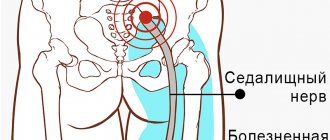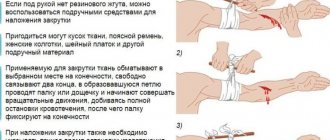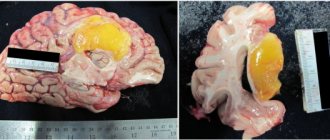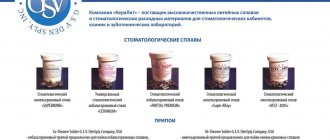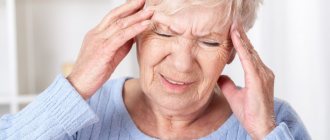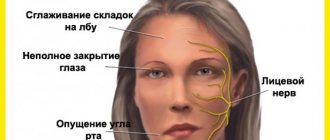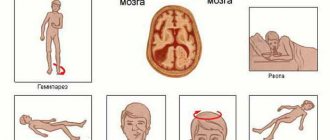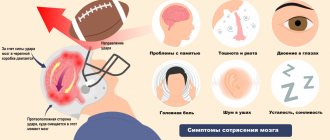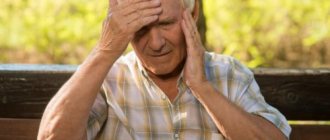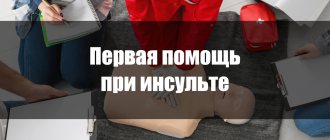Why is a pinched nerve in the lower back dangerous?
The pathology can develop at any age, but most often affects patients over 35 years of age.
A condition in which the lumbar nerve is pinched is fraught with various complications:
- muscle spasms;
- deterioration in coordination of movements;
- development of intervertebral hernia.
If a nerve is pinched, the immune defense is often weakened, and pathogenic viruses and bacteria easily enter the body. Other consequences of the pathology include sudden changes in blood pressure, dysfunction of internal organs, and the development of general weakness.
In the absence of quality therapy, the patient’s condition quickly deteriorates, accompanied by severe discomfort and loss of full performance.
Lower back pain due to kidney disease
For lower back pain, it is important to determine what is causing it - pathologies of the musculoskeletal system or kidney disease (as well as other internal organs). Diagnosis must be carried out by a doctor. However, there are signs to suggest that the pain may be due to problems with the kidneys and/or other organs of the genitourinary system. If these symptoms occur, it is advisable to immediately contact a urologist. Kidney disease (or more broadly, the genitourinary system) can be suspected if lower back pain is accompanied by:
- general deterioration in health (lethargy, drowsiness, weakness, increased fatigue);
- swelling of the eyelids and face. Swelling is especially pronounced in the morning, after waking up, and subsides in the evening;
- increased body temperature, chills, sweating;
- loss of appetite, nausea, vomiting;
- frequent or painful urination;
- changes in the characteristics of urine (it may become more concentrated in color or, conversely, colorless, contain mucus or blood);
- increased blood pressure.
Also an important sign that lower back pain is caused by problems of the internal organs, and not the musculoskeletal system, is its independence from the position of the body: the pain does not increase or decrease from changes in the position of the body and limbs. However, with prolonged standing in a standing position due to check pathology, the pain may intensify. The location of the pain also matters. With kidney disease, pain is most often observed on one side (since usually only one kidney is affected). Kidney pain may not be limited to the lower back, but may spread along the ureter, to the groin, to the external genitalia, to the inner thighs.
Diagnosis of a pinched nerve root
After visiting a doctor with complaints of a pinched nerve, the following diagnostic procedures are performed:
- Examination of the patient.
- X-ray examination.
- Magnetic resonance imaging (MRI).
- Computed tomography (CT).
- Myelography.
- Electromyography.
The patient is also prescribed a general blood test and tests that indicate the presence or absence of affected nerves.
Based on the examination results, the specialist draws conclusions about the causes of the development of the pathology and begins to prescribe an adequate treatment course.
Which doctor should I contact with a complaint of lower back pain?
If you have lower back pain, it is best to consult a general practitioner, since first of all you need to determine which organ disease is causing the pain. Depending on the results of the examination, consultation with a particular medical specialist may be required. Can be assigned:
- consultation with a neurologist to assess the condition of the spine, back muscles and nervous system;
- consultation with a urologist – in case of suspected urinary system disease;
- consultation with a gynecologist – if chronic diseases of the female reproductive system are suspected or present;
- general blood test and general urinalysis - to confirm or exclude the inflammatory nature of the disease;
- radiography of the spine;
- Ultrasound of the hip joints;
- as well as other studies.
First aid for pinching
Sometimes it is necessary to alleviate the patient's condition urgently, before providing professional medical assistance. In such situations, perform the following actions:
- eliminate all factors that can worsen the patient’s well-being (drafts, cold, stress);
- lay the victim on a flat, hard mattress, provide him with complete rest;
- raise the lower limbs by placing several pillows under them;
- They tie the back tightly with a scarf (handkerchief) or put on a special corset.
If there is acute spasmodic pain, you can give the victim an analgesic. The approved drugs include Analgin, Paracetamol, Aspirin, Ketanov, Nise.
Prevention of low back pain
The occurrence of lower back pain is often provoked by a careless attitude towards one’s own health. Pain may be caused by:
- staying in the same position for a long time (for example, during sedentary work);
- incorrect posture;
- low mobility;
- excessive physical activity.
All these factors contribute to the development of diseases manifested by lower back pain. The risk of pain can be reduced by following the following advice from doctors:
- watch your posture;
- Avoid uncomfortable postures when working while sitting. It is advisable that the knees are slightly higher than the hip joints. To do this, use a low chair or footrest. Place a small pillow between your lower back and the back of the seat;
- When working sedentarily, you need to get up from time to time to move around. Take five-minute breaks every hour; how to lift weights correctly
- It is advisable to sleep on an orthopedic mattress (elastic and quite hard);
- You need to lift weights by bending your knee joints, not your back. That is, you need to squat down, bending your knees, and then straighten them, while maintaining a straight line of your back;
- When carrying a load, it must be evenly distributed between both hands; you cannot carry the entire load in one hand (one heavy bag);
- Every day you should do a set of exercises aimed at strengthening the abdominal and back muscles.
Treatment for a pinched nerve in the lower back
When lower back compression occurs, treatment will consist of a variety of techniques. Specialists prescribe special medications, therapeutic exercises, manual therapy, and massage to patients.
In difficult cases, surgical intervention is required. Folk remedies are often given a supporting role.
Drug treatment
In order to eliminate negative symptoms and improve the patient’s condition, the following are prescribed:
- injections with drugs that relieve inflammation and pain (Movalis, Diclofenac, Ketonal, Novocaine);
- rubbing the lower back with ointments that have anti-inflammatory, warming, analgesic effects (Finalgon, Viprosal, Flexen, Betalgon).
Before prescribing certain medications, the specialist clarifies the degree of their tolerability. The duration of the medication course and dosage regimen are determined individually.
Physiotherapy
Therapeutic exercises are started after acute symptoms have been relieved. The most useful will be:
- Bend to the sides, forward.
- Walking in place with high knees.
- Swing your legs in different directions.
- Bend the legs at the knee joints, bringing them to the chest in a horizontal position.
- Riding on your back with your hands clasped around your knees.
- Twisting while lying on your side.
Training is carried out daily, for at least 10 minutes. The main goals of gymnastics are to improve blood circulation, absorption of nutrients, and activate the flow of oxygen to muscles and joints.
Manual therapy and massage
Manual therapy and massage methods can only be used as prescribed by a doctor. A manual specialist performs deep muscle work and has a pronounced effect on the lumbar spine.
The result of the doctor’s competent work is the unblocking of the existing pinching.
Massage provides a more superficial effect. This method relieves pain, improves blood and lymph circulation, and normalizes the function of the pathological nerve. Procedures performed by an experienced specialist help avoid unwanted relapse in the future.
Surgical intervention
The grounds for the operation are:
- insufficient effectiveness of conservative therapy;
- the patient has a hernia.
If the integrity of the nerve is compromised, the patient is prescribed neurosurgical intervention to restore damaged nerve threads.
This method is used in cases where the main treatment does not bring results for two or more months.
Impact with folk remedies
If a pinched nerve occurs in the lower back, treatment can be carried out using alternative medicine recipes. Traditional healers recommend using:
- Fresh celery juice (1 tablespoon inside, each time before meals). The method is also supplemented with compresses with herbal substances.
- Baths with medicinal plants (horse chestnut, oak bark, calamus root).
- Rubbing with fir oil or valerian tincture (after the procedure, the lower back is insulated with a woolen scarf or scarf).
- Honey cakes for the lumbar region.
Before starting home therapy, you must obtain your doctor’s approval and make sure you are not allergic to the components used.
Treatment of low back pain radiating to the leg and buttock
After determining the cause of pain, treatment tactics are individually developed for each patient. Initially, patients are prescribed complex conservative therapy. Although sometimes patients develop severely advanced diseases, which can only be treated surgically.
Conservative treatment of lower back pain radiating to the leg and buttock is developed taking into account the detected pathological changes. Therefore, in each individual case it will have its own distinctive features. The main components of treatment are:
- drug therapy;
- osteopathy;
- manual therapy;
- massage;
- physiotherapy (phonophoresis, carboxytherapy, ozone therapy, pressotherapy, RF currents);
- individual sessions with a rehabilitation doctor.
Also, the chiropractor will definitely recommend making certain adjustments to the lifestyle, since low physical activity, excess weight and an unbalanced diet work against the patient. Therefore, it is advisable to take measures to normalize body weight and move more, which is especially important in relation to representatives of “sedentary” professions. At the same time, lifting weights and grueling workouts in the gym should be left in the past.
When treating spinal pathologies, it is important to eat properly so that the body receives all the substances it needs from food. This will ensure an improvement in the processes of tissue restoration and regeneration, and will also lead to a general improvement in well-being.
In some cases, patients are offered to purchase a special orthopedic corset. It will help relieve the back muscles and reduce the load on the spine, which will help reduce the severity of pain. But the size and degree of rigidity of such products are selected for each person individually based on the diagnosis. In our center you can select and purchase a corset that suits you.
Drug therapy
All patients are prescribed a whole range of medications that will help improve their well-being and will affect the cause of pain. Their list, as well as the method of administration, are also selected individually, taking into account not only the diagnosis, but also existing concomitant diseases, since certain drugs cannot be taken in the presence of pathologies of the gastrointestinal tract, etc.
Thus, the basis of drug treatment for spinal diseases that provoke the appearance of lower back pain radiating to the buttock and leg are:
- NSAIDs are a huge group of drugs that have anti-inflammatory and analgesic properties and are available in almost all possible dosage forms (tablets, solutions for intramuscular and intravenous administration, rectal suppositories, ointments, gels, creams, etc.;
- corticosteroids are powerful anti-inflammatory drugs, which are used when NSAIDs are insufficiently effective (often prescribed in short courses);
- muscle relaxants - drugs that quickly eliminate muscle spasms, which leads to a decrease in the severity of lower back pain;
- chondroprotectors are medications designed to accelerate the regeneration processes of intervertebral discs, but are effective only in the initial stages of the development of osteochondrosis. To prevent diseases of the musculoskeletal system, we recommend the most effective drug Mermaids Marine Collagen to our patients;
- B vitamins - medications that help improve the conduction of nerve impulses from the spinal cord to the corresponding organs and parts of the body;
- Vitamin D is a remedy responsible for the condition of bone tissue, as well as for higher brain functions, such as memory, memory, attention, and speech.
For very severe pain that cannot be relieved with analgesics or NSAIDs, blockades can be performed. They are a medical procedure in which an anesthetic solution containing a corticosteroid is injected directly into the area where the compressed nerve passes. Thanks to this, it is possible to quickly eliminate even very severe pain, but the procedure has contraindications and can only be performed by qualified medical professionals who are thoroughly proficient in the technique of placing blockades, in a medical institution. When performing a blockade, there is a risk of nerve damage, especially when a drug solution is administered by a specialist without appropriate training, which is fraught with serious complications.
Manual therapy
Manual therapy is one of the most effective methods of combating pain in the lower back, including those that tend to radiate to the leg and buttock. With its help, it is possible to achieve a significant improvement in well-being, not temporary, but permanent. We do not have general standards of treatment; we apply an individual approach to each patient. The use of techniques of manipulation, mobilization, post-isometric relaxation, as well as Gritsenko’s original technique makes it possible to effectively influence the causes of pain and restore the normal anatomy of the spine, which has a beneficial effect on the condition of the whole organism.
Manual therapy and therapeutic massage are not the same thing. Manual therapy involves influencing the spine and has a much wider range of therapeutic possibilities, while therapeutic massage can only improve blood circulation in the soft tissues and affect muscle tone.
Thanks to manual therapy it is possible to:
- increase the distance between the vertebrae, thereby reducing pressure on the intervertebral discs and eliminating factors predisposing to the formation or increase in protrusions and intervertebral hernias;
- normalize the position of the vertebrae and eliminate curvature of the spine;
- eliminate the pressure of vertebral structures on the nerve roots, spinal cord and thereby achieve the elimination of acute pain, including that radiating to the leg and buttock;
- normalize muscle tone, eliminate spasms and tone overly relaxed ones, eliminate the risk of developing atrophy;
- increase range of motion;
- significantly improve the quality of blood circulation and tissue nutrition;
- activate the body's natural recovery processes.
This is far from the full range of possibilities of manual therapy, since the method involves deep work on the spine. This has a comprehensive healing effect on the body and causes a progressive improvement in well-being. A decrease in pain intensity is observed after the first session, and then the condition improves more and more. Ultimately, patients note not only the elimination of lower back pain radiating to the leg and buttock, but also a noticeable increase in immunity.
The duration of manual therapy and the frequency of sessions is selected individually for each patient.
Physiotherapy
Physiotherapy procedures are used to obtain anti-inflammatory, analgesic, antispasmodic effects, improve microcirculation and potentiate other methods of treatment. As a rule, patients are prescribed courses consisting of 8-15 sessions, conducted at different intervals. It could be:
- electrophoresis;
- laser therapy;
- ultrasound therapy;
- UHF.
Exercise therapy
When dealing with lower back pain radiating to the leg and buttock, the possibilities of physical therapy cannot be neglected. A set of exercises is developed separately for each patient. This takes into account the diagnosis, the patient’s age, his level of physical fitness, the presence of concomitant diseases and other factors. This allows the rehabilitation doctor to select the optimal level of load and the most effective and safe exercises that will bring maximum benefit.
So that the patient can thoroughly master the technique of performing each exercise, the first classes are recommended to be carried out under the supervision of a specialist. If necessary, he will be able to adjust the load and replace the exercises with easier ones to perform. Only after 100% mastery of all exercises is it possible to continue training at home. But it is important to do exercise therapy every day, while avoiding haste and sudden movements. Only in this case will physical therapy be beneficial, strengthen the muscles of the lower back and legs, and also help improve blood circulation and nutrition of tissues in the affected area.
Thus, it is impossible to be negligent in treating lower back pain that radiates to the leg and buttock. This can provoke irreversible changes, including paralysis and disability, which are not always possible to eliminate even with surgery. Therefore, we recommend that you seek medical help at the first signs of discomfort.
0 0 votes
Article rating
Kinesitherapy for pinched nerves in the lower back
A modern way to combat pathology is treatment at the Kinesitherapy Center.
The method is based on the principle of S. M. Bubnovsky. Kinesitherapy involves performing alternative gymnastics exercises and using a simulator that has both decompression and antigravity.
If you are concerned about pinching in the lower back, you should entrust the symptoms and treatment of the pathology to our specialists.
Regular training under the supervision of qualified employees will provide a lot of positive effects: they will remove pain, improve blood circulation, normalize motor activity and range of motion in the joints.
The kinesitherapy method guarantees an increase in the quality of life and restoration of working capacity. Our Centers operate in Zelenograd, Tver, Dubna and Klin.
If there is a pinched nerve in the lower back, pain, treatment must begin as soon as possible. Delay can cause dangerous complications and cause a deterioration in overall health.
What can low back pain look like?
Most often, lower back pain occurs suddenly, sharply and is acute. In this case they talk about lumbago
(outdated popular name -
lumbago
). The pain is described as sharp, “shooting.” Movements are constrained, sometimes it is even impossible to straighten your back. With any movement the pain intensifies.
An attack of pain can last a couple of minutes, or it can last for a longer period of time (up to several days). It may be that the attack will pass and the pain will no longer remind itself, but often the pain returns and the person gets used to the fact that his lower back can hurt.
Lower back pain can not only be acute (sharp), it can be nagging and chronic. Mild but constant pain in the lower back, sometimes worsening, for example, during physical activity, an infectious disease, hypothermia, etc., is called lumbodynia
. Sometimes there is no direct pain, but stiffness remains in the lower back, and the patient experiences discomfort.
MESSAGE FROM THE CHIEF DOCTOR:
Often, when examining a patient, doctors pay attention only to the bones, ligaments, and joints. At the same time, nothing is said about muscles
, the function of contraction of which plays a significant role in human life. Weakened muscles lead to thinning and deformed bones.
Unfortunately, common methods of therapy only aggravate the situation, leading to even more severe pain, muscle atrophy and a deterioration in the quality of life of patients.
Effective treatment is impossible to imagine without muscle restoration. Unique kinesitherapy technique
consists in a therapeutic effect, which implies, first of all, muscle activity during the methodical execution of a set of exercises on special simulators.
All exercises are performed by patients sitting or lying down, so there is no excessive stress on the joints and circulatory system, and our instructors-methodologists correct the technique of movements
and monitor the correct execution of actions.
Remember that diseases of the spine and joints are not a death sentence; if the patient wishes and the right approach to treatment, everything can be corrected!
Diseases of the musculoskeletal system that cause lower back pain:
- pinched sciatic nerve. The nerve roots extending from the spinal cord are compressed by neighboring vertebrae. In this case, a sharp, shooting pain occurs. As a rule, pinched roots become possible due to degenerative changes in the spine (osteochondrosis): the intervertebral discs separating the vertebrae from each other are destroyed, the gap between the vertebrae narrows and sudden movement (tilting, turning) can lead to pinching of the nerve branch;
- sciatica (lumbosacral radiculitis). Pinched nerve roots can become inflamed. Inflammation of the nerve roots is called radiculitis (from the Latin radicula - “root”); To indicate inflammation of the sciatic nerve, a special name is sometimes used - sciatica. If the sciatic nerve is damaged, lumbar ischialgia may be observed - pain in the lower back, also spreading to the buttock and leg along the sciatic nerve;
- intervertebral disc herniation – protrusion of a fragment of the intervertebral disc into the spinal canal. Occurs as a result of injury or degenerative changes in the spine (osteochondrosis);
- myositis of the lumbar muscles. Myositis is an inflammation of skeletal muscles. The cause of myositis of the lumbar muscles can be hypothermia or sudden tension.
Also, lower back pain can be caused by diseases such as multiple sclerosis, degenerative sacroiliitis, osteoporosis.
Causes of pain
Most often, lower back pain radiating to the leg occurs due to diseases of the spinal column. Many of these pathologies are characterized by so-called referred pain, when discomfort appears not only in the affected area of the spine, but also in other areas:
- buttocks;
- legs;
- hip joint;
- abdominal area;
- other parts of the spine.
Referred pain is caused by compression of nerve roots and blood vessels. Due to compression, the nerves transmit “wrong” signals, and pain appears in healthy organs and parts of the body. One of the main factors leading to lumbar pain is improper physical activity. Also, chronic diseases of the spine can be aggravated due to physical inactivity or frequent forced postures (stooping work, etc.), tight clothing, lack of sleep and unbalanced nutrition. Severe lower back pain radiating to the legs requires comprehensive diagnosis and mandatory medical supervision. Attempts at self-medication can only worsen the patient's condition. Pathologies of the spinal column, in the absence of treatment, progress and cause even more severe destruction of cartilage and vertebrae, damage to nerves and blood vessels, up to paralysis. Other diseases that may accompany this syndrome are also very dangerous and, without treatment, lead to serious consequences. For example, a similar condition sometimes occurs with duodenal ulcers, tuberculosis infections and kidney diseases.
What pathologies can cause referred pain in the legs?
Spinal diseases that cause lower back pain radiating to the left or right leg can be:
- deforming;
- degenerative-dystrophic;
- inflammatory.
- With deforming diseases, the anatomy of the spine is disrupted; accordingly, the muscles around it, as well as internal organs, are displaced. Contrary to popular belief, various types of curvature of the spinal column (scoliosis, kyphosis and lordosis) can appear at any age, especially in people who lead a sedentary lifestyle. When the spine is deformed, the load on the body is distributed unevenly, which is why one leg “works” more than the other, its joints bear an excess load, which causes pain in the knee, hip, and foot. In unadvanced cases, spinal curvature can be eliminated with the help of exercise therapy and other conservative treatment methods
- With degenerative pathological processes, the vertebrae often become displaced and the height of the intervertebral discs decreases. A common disease such as osteochondrosis can cause leg pain. With arthrosis, osteophytes are formed - sharp bone growths that injure nerve roots, blood vessels and muscle tissue. These diseases are chronic, but in the early stages they can be successfully treated with therapeutic methods
- Inflammatory pathologies, such as arthritis, can also lead to referred pain in the legs. This disease also requires mandatory medical supervision, since inflammation can lead to tissue necrosis or sepsis.
